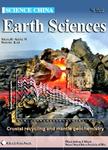Inspirations from the scientific discovery of the anammox bacteria: A classic example of how scientific principles can guide discovery and development
Inspirations from the scientific discovery of the anammox bacteria: A classic example of how scientific principles can guide discovery and development作者机构:State Key Laboratory of Marine Environmental Science College of Ocean and Earth Sciences Xiamen University
出 版 物:《Science China Earth Sciences》 (中国科学(地球科学英文版))
年 卷 期:2016年第59卷第1期
页 面:449-455页
核心收录:
学科分类:083002[工学-环境工程] 0830[工学-环境科学与工程(可授工学、理学、农学学位)] 07[理学] 08[工学] 09[农学] 0903[农学-农业资源与环境] 0713[理学-生态学]
基 金:the National Natural Science Foundation of China (Grant Nos. 91328209, 91428308) the National Key Basic Research Program of China (Grant No. 2013CB955700) the State Oceanic Administration of China Program (Grant No. GASI-03-01-02-05) the Program of China National Offshore Oil Corporation (Grant Nos. CNOOC-KJ 125 FZDXM 00TJ 001-2014, CNOOC-KJ 125 FZDXM 00ZJ 001-2014) the Ministry of Science and Technology of the People’s Republic of China Program (Grant No. 2011IM010700)
主 题:Anaerobic ammonium oxidation Marine nitrogen cycle Chemolithoautotrophy Wastewater treatment Scientific inspiration
摘 要:Anaerobic ammonium oxidation(anammox) is a relatively new pathway within the N cycle discovered in the late 1990 s. This eminent discovery not only modified the classical theory of biological metabolism and matter cycling, but also profoundly influenced our understanding of the energy sources for life. A new member of chemolithoautotrophic microorganisms capable of carbon fixation was found in the vast deep dark ocean. If the discovery of the chemosynthetic ecosystems in the deep-sea hydrothermal vent environments once challenged the old dogma all living things depend on the sun for growth, the discovery of anammox bacteria that are widespread in anoxic environments fortifies the victory over this dogma. Anammox bacteria catalyze the oxidization of NH_4^+ by using NO_2^- as the terminal electron acceptor to produce N_2. Similar to the denitrifying microorganisms, anammox bacteria play a biogeochemical role of inorganic N removal from the environment. However, unlike heterotrophic denitrifying bacteria, anammox bacteria are chemolithoautotrophs that can generate transmembrane proton motive force, synthesize ATP molecules and further carry out CO_2 fixation through metabolic energy harvested from the anammox process. Although anammox bacteria and the subsequently found ammonia-oxidizing archaea(AOA), another very important group of N cycling microorganisms are both chemolithoautotrophs, AOA use ammonia rather than ammonium as the electron donor and O_2 as the terminal electron acceptor in their energy metabolism. Therefore, the ecological process of AOA mainly takes place in oxic seawater and sediments, while anammox bacteria are widely distributed in anoxic water and sediments, and even in some typical extreme marine environments such as the deep-sea hydrothermal vents and methane seeps. Studies have shown that the anammox process may be responsible for 30%–70% N_2 production in the ocean. In environmental engineering related to nitrogenous wastewater treatment, an



